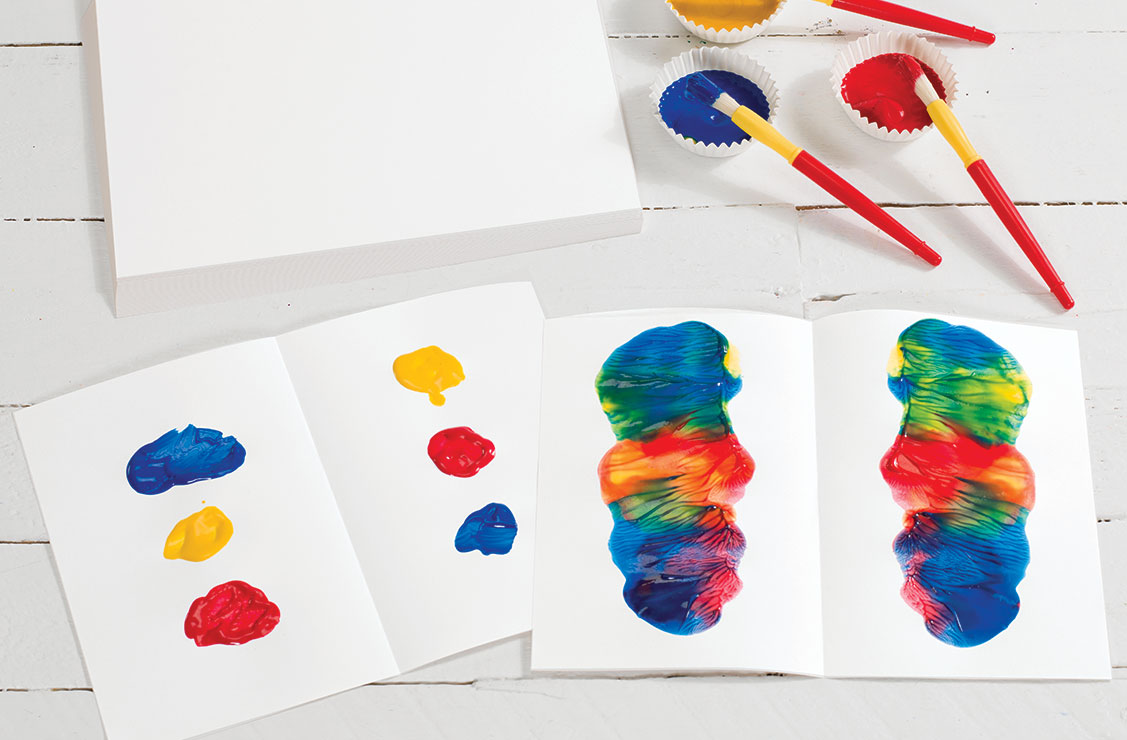
Menu
- Home
- Primary and Secondary Colors STEM Activity
primary & secondary colors


intro:
This activity is a creative way to demonstrate that secondary colors are made from primary colors! Children will not only begin to understand the science behind colors and color mixing, but they'll gain valuable creative skills as well.
set up ideas:
Color is the name of the game with this activity, so create an environment full of color! A color wheel is great to have on hand to easily point our primary, secondary and even tertiary colors.
This activity is a creative way to demonstrate that secondary colors are made from primary colors! Children will not only begin to understand the science behind colors and color mixing, but they'll gain valuable creative skills as well.
set up ideas:
Color is the name of the game with this activity, so create an environment full of color! A color wheel is great to have on hand to easily point our primary, secondary and even tertiary colors.
let's get started
This creative activity gives big results with only a few materials needed! Simply gather tempera paint in primary colors, brushes and sheets of paper large enough to fold in half.
step 1
Place a dab of a primary color of paint on one side of a sheet of paper. Then, place another primary color on the other side of the fold.
Place a dab of a primary color of paint on one side of a sheet of paper. Then, place another primary color on the other side of the fold.
step 2
Carefully fold the paper in half again at the crease created earlier. Press down so that the different colors of paint on each side will mix.
Carefully fold the paper in half again at the crease created earlier. Press down so that the different colors of paint on each side will mix.
step 3
Discuss what happened when the two different primary colors mixed with one another.
Discuss what happened when the two different primary colors mixed with one another.
step 4
Repeat the above steps with a different combination of primary colors. Again, observe and discuss what happens when the colors mix.
Repeat the above steps with a different combination of primary colors. Again, observe and discuss what happens when the colors mix.
When two primary colors (red, yellow and blue) mix, they form secondary colors (orange, green and violet). When a secondary color is combined with a primary color (e.g., green mixed with blue), a tertiary color is formed (e.g., cyan). What would happen when mixing a color with white or black?
Once the children have formed secondary colors, show them where each of the colors fit on a color wheel. This can be a very helpful reference.
 Follow up Activity
Follow up ActivityContinue to experiment with color by mixing secondary colors with primary colors to create tertiary colors. Also, try mixing a color with a little white or black and discover what happens.
Introduce young learners to primary and secondary colors with a fun-filled STEM activity from Discount School Supply. In this hands-on activity, art and science come together as kids use tempura paint to explore with color and to see what happens when two primary colors are mixed together. Watch their minds grow as they mix paints to create secondary colors, learning the science behind color and color mixing while simultaneously improving gross motor skills and creative skills. This easy activity is a great way to explore primary and secondary colors for kids.
Set Up Ideas
Getting ready for the primary & secondary colors activity is easy. All you need are some paint brushes, water, tempura paint in three colors (red, blue and yellow) and some paper. A color wheel is also great to have on hand, but isn’t necessary for this activity. Consider making your own color wheel during the activity for even more hands-on fun.
Turn the entire activity into an opportunity to learn by asking students to identify the three primary colors before they get started. Quiz them on what secondary colors are made with different blends of primary colors and let them mix the paints together to see if they’re right. Once they have all of the primary and secondary colors made, use the paints to create artwork.
Takeaway
The Primary and Secondary Colors Activity should only take about 10 to 15 minutes to complete and requires minimal materials. Once finished, students should have a firm grasp on what the primary colors are, as well as how to make all of the secondary colors by blending the primary colors together. For more advanced learners, you can even have them create tertiary colors to finish the color wheel.
Children retain information better through hands-on activities and there’s no better way to explore color than through a painting activity. Setup is easy, materials are inexpensive, but the lessons learned are priceless. Visit Discount School Supply today to order tempura paint, paper and other materials needed to complete this activity.


